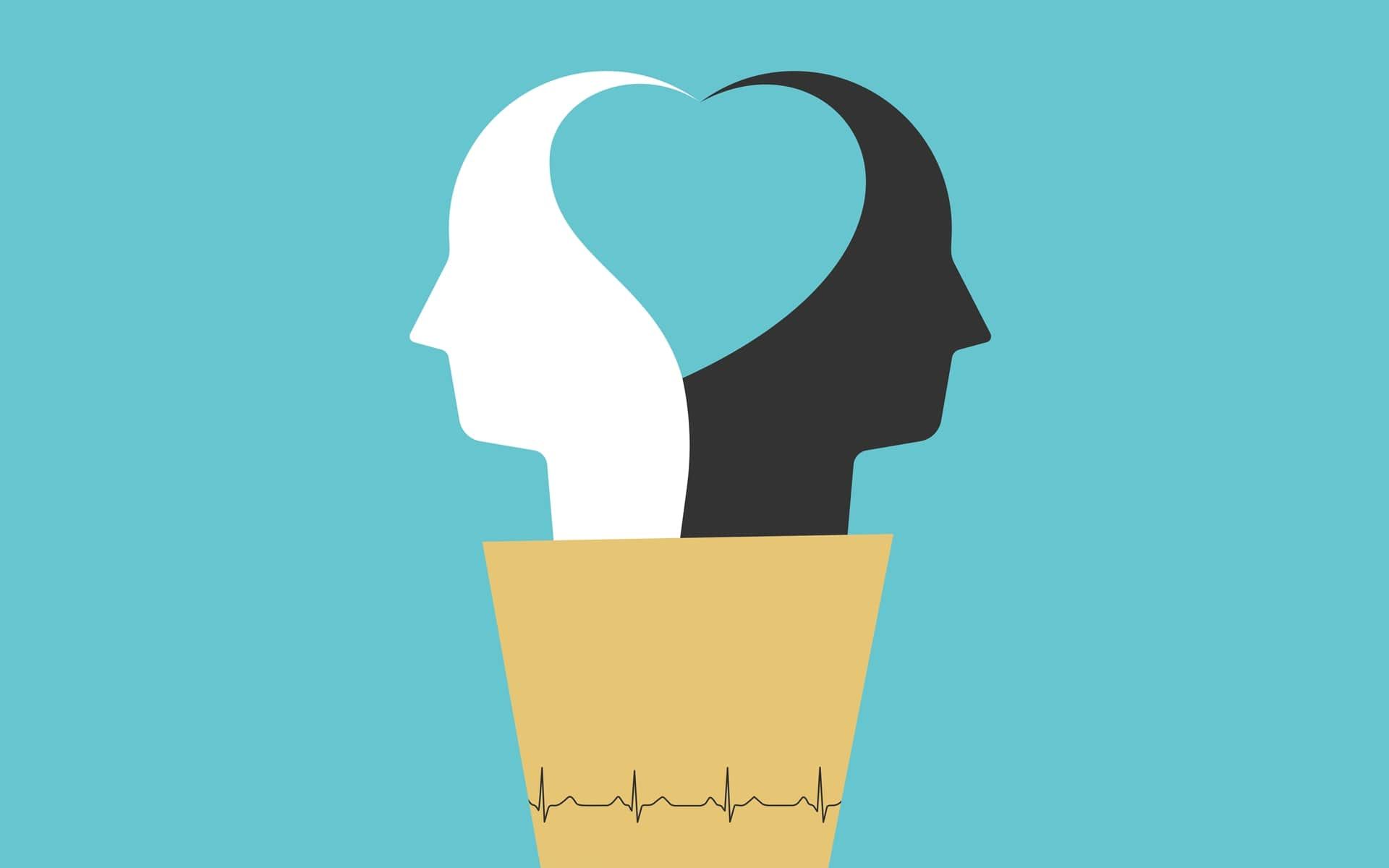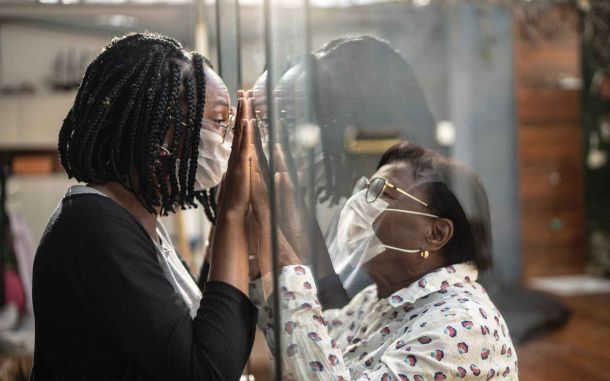Racial Disparities

American history is lined with clear examples of overt racism from slavery to the implementation of the Jim Crow Laws, and many other examples that have taken years of struggling to dismantle. However far we seem to have come current events such as the killing of Black individuals including Emmet Till, Trayvon Martin, Sandra Bland, Tamir Rice, Ahmaud Arbery, George Floyd, Breonna Taylor, and countless others, along with the disproportionate mass incarceration rates of Black individuals and the fact that school segregation is worse than it was since the 1954 landmark ruling Brown v. Board of Education, show that the struggle is far from over. These are the consequences of institutional racism, which is defined as a system that is in place in order to intentionally harm certain groups regardless of whether or not the individuals in that system are “racist.” Racism is a social disease that has yet to be eradicated and just as a disease harms multiple bodily systems requiring a multi-pronged approach, racism must be attacked from the angle of education, employment, housing reform, criminal justice reform, and even healthcare reform.
Historical examples of discrimination in healthcare
The exploitation of vulnerable populations in the name of scientific progress and research has innumerable examples that continue to this day. It is important to touch on the history experienced by Black communities because half of today’s white medical trainees still believe notions that were instilled by the scientific community in the past, such as the idea that Black patients having thicker skin, less sensitive nerve endings, or that their blood coagulates more quickly [1].
One such example is Henrietta Lacks, a Black woman from Roanoke, VA, who came to Johns Hopkins Hospital in 1951 for cervical cancer treatment. Without consent, her cancer tissues were biopsied and cultured by George Otto Grey in order to make the HeLa cell line. Her cells were unique in that they regenerated continuously and became the first “immortalized human cell line.” To this day, her cells have contributed to over 17,000 patents and many major advances in scientific research. The Lacks’ family was not made aware of the HeLa cell line’s existence until 1975, 24 years after Henrietta’s death, despite researchers knowing about it since its inception. While the medical community profited an incalculable amount of money from Henrietta’s cells, she was buried in an unmarked grave and her family has not received any compensation nor control over who uses her cells to this day [2].
Another example is a study titled “Tuskegee Study of Untreated Syphilis in the Negro Male,” in 1932 where researchers enrolled 600 Black participants in a 6-month study without their consent and without the option to exit the study and then proceeded to withhold penicillin treatment from them for more than 40 years. Not only were they denied treatment of a curable disease, but these men were also never informed of their diagnosis and were instead told that they had “bad blood,” which meant that they went on to unknowingly infect others as well as suffer from the effects such as blindness, deafness, heart disease, and the collapse of the central nervous system. It is also important to note that by 1947 penicillin had become the standard of care for syphilis treatment, but these men were forced to suffer through this inhumane study until 1972 [3, 5]. In 1995, the offspring of these men were enrolled in a program that provided them with medical benefits, 11 of whom continue to receive treatments to this day [4].
Perhaps the most barbaric recorded example is of J. Marion Sims, renowned as “the father of gynecology,” who would perform surgical experiments on enslaved Black women without anesthetics (which he would provide to white patients) [6]. What is most appalling, perhaps, is that some medical institutions still defend Sims’ actions and glorify him with monuments across the nation [7]. It is easy to think that these horrific events that happened in the past have no current impact, but the truth is that race-based studies such as these have caused generational trauma among Black communities. They also continue to impact how much, or how little, Black communities trust our healthcare systems today thus directly affecting patient-physician relationships. We could continue to delve into this brutal history with endless examples including the eugenics movement and craniology [8], however, given the limited space of this article, it may be more constructive to focus on the racial disparities in healthcare that we see today.
Current day examples
The consequences of racial inequality continue to this day as has been displayed during the recent COVID-19 pandemic. As of June 2020, about 70% of Chicago’s COVID-19 deaths occurred among Black patients even though they account for 30% of the city’s population. As Dr. Marcella Nunez-Smith, director of the Equity Research and Innovation Center at Yale School of Medicine said, “We know that these racial ethnic disparities in COVID-19 are the result of pre-pandemic realities. It's a legacy of structural discrimination that has limited access to health and wealth for people of color” [20].
Maternal mortality is an indicator of development and while it has gone down by 38% worldwide since 2000 it has gone up in the United States by over 25% thus making it the country with the highest percentage of maternal mortality in the “developed” world [9,10]. Perhaps one of the most glaring failures of the United States healthcare system is seen in its infant mortality rates, which are twice as high in Black infants. Although this is a frightening statistic for all women and their loved ones it is important to make the distinction that Black women are 3-4 times more likely to experience a pregnancy-related death in America. Studies have found that Black women are at an increased risk for several pregnancy-related complications, such as cardiomyopathy, hypertensive disorders, abruptio placentae, placenta previa, and postpartum hemorrhage [11, 12]. 60% of these deaths were deemed preventable with no significant difference in preventability across racial groups. If this is the case, then one cannot help but wonder how this happens so disproportionately to Black women. This was accurately illustrated in one episode of “The Resident” that was inspired by the true story of Kira Johnson, a Black woman who never came home from her routinely scheduled C-section. She was ignored by doctors and staff despite complaining of severe pain in her abdomen. During her surgery, doctors lacerated her bladder and saw that Kira had been bleeding internally for hours. By that time, it was too late and Kira died on the operating table due to complete negligence. It can be easy to dismiss Kira’s experience as the carelessness and bias of one physician, but several studies have confirmed that racial bias in pain assessment and treatment is real and can have real consequences as was the case with Kira Johnson [13].
Racial disparities in chronic health problems and diagnostics
Black people are 40% more likely, with Black women specifically being 60% more likely, to have hypertension compared to their white counterparts, which translates into higher rates of heart disease in Black people compared to whites. Heart disease is multifactorial, therefore socioeconomic issues such as living in “food deserts” with little access to healthy food, which are a direct byproduct of years of racist housing policies – such as “redlining” – must also be considered [14]. Black men are also less likely to have their blood pressure under control, which could be due to a variety of factors including lack of access to medication or hospital facilities, or even a distrust in the medical system that prevents them from seeking care. However, regardless of barriers within the community, institutional racism is still clear in how these Black patients are treated once they enter through a hospital's doors. Black patients are 29% less likely to undergo an angiogram after a heart attack, compared to white patients, and are also 45% less likely to be treated with bypass surgery or an angioplasty compared to white patients, thus denying Black people the standard of care that they deserve [15].
Hospital statistics have also shown stark differences in between diabetes data for Black and white patients. For example, Black patients are 2.5 times more likely to have uncontrolled diabetes, 2.3 times more likely to have a lower extremity amputation due to diabetes complications, and 3.5 times more likely to have end-stage renal disease compared to white patients [19]. Healthcare professionals need to ask why this is the case and address this crisis. Physicians should recognize the unconscious biases that live within our field and discuss how we can overcome them in order to build stronger and healthier relationships with our Black patients. We must recognize where we stand as healthcare professionals and that we have the power to change a stacked system into one that is more compassionate and equal.
Racial disparities can even be seen in diagnostic techniques that measure kidney and lung functions as well as those that use artificial intelligence algorithms. Kidney function is estimated using the MDRD equation which factors in race on the basis that Black patients have “greater muscle mass” citing studies from the 1970s where Black patients were highly underrepresented. This causes the equation to overestimate kidney function in Black patients, meaning that they are less likely to be diagnosed and treated for kidney diseases [17]. In 2018, the University of Washington, with an initiative spearheaded by their medical students including Naomi Nkinsi, was the first institution to transition to calculating kidney function without adjusting for race [16]. Lung function was long believed to be lower in Black individuals and even current research that uses old National Health and Nutrition Examination Survey (NHANES) datasets supports this belief. However, much of this data was collected before the end of Jim Crow segregations when Black communities were subjected to increased environmental injustice. Using newer datasets, significant discordance has been recorded between older reference standards and NHANES III [18]. Decades of unjust housing practices such as redlining, and less obvious practices that continue to this day that keep communities segregated, newer data sets are also likely to be skewed. The use of a single, standard correction factor to adjust for race, rather than a holistic view of unjust socioeconomic or environmental risk factors, must be questioned if we truly want to provide the best care for our patients.
The scientific community has tried to simplify a heterogeneous Black community into a homogenous one which limits the reliability of race-based equations or racial conversion factors. It is important to keep asking ourselves; is “race” or “racism” the risk factor? Furthermore, with increasing utilization of artificial intelligence to improve precision and accuracy in medicine it is crucial to note how race will play a role in machine learning tasks that are built using historical data sets that can be inherently biased against race. Just to name a few obstacles, Black patients are underrepresented in clinical trials and there is scant data of images of skin cancers on dark-skinned patients, which will translate into inaccurate predictions of adverse drug effects and increased misdiagnoses in Black patients.
Conclusion
This article has only scratched the surface of patients’ experiences with racism, but we must not forget the racism experienced by physicians, nurses, pharmacists, and all other healthcare workers. We did not even get to discuss how screening rates for various cancers are lower and mortality rates higher among African Americans, how Black Americans are less likely to obtain mental health treatment, less likely to be referred to specialists, and twice as likely not to have health insurance. The examples of how race plays a role in healthcare are limited in the scope of this article and were intended to spark curiosity in learning more about the impact of racial disparity in the healthcare system and overall. The Student National Medical Association has suggested reading Medical Apartheid, Why All the Black Kids Are Sitting Together in the Cafeteria, The Immortal Life of Henrietta Lacks, Crucial Conversations, The New Jim Crow, White Fragility, and several other books for further self-education and understanding of this complicated and multi-faceted issue. The disparity in health inequity is caused by a history of racist practices that are continually enforced; this is not something we can continue to turn a blind eye to. In fact, it is a healthcare crisis. We cannot deny the responsibility of bringing to light our own biases and unpacking the covert prejudice within us through self-questioning, education, and proactive and engaged human connection. We must hold ourselves accountable to have difficult conversations with our community, to advocate, to be an ally to all those who are oppressed, and to listen to the needs of the Black community so that we can stand stronger together.
References
- https://www.aamc.org/news-insights/how-we-fail-Black-patients-pain
- Skloot, Rebecca. 2011. The Immortal Life of Henrietta Lacks, New York: Crown.
- https://www.nytimes.com/1972/07/26/archives/syphilis-victims-in-us-study-went-untreated-for-40-years-syphilis.html
- https://www.cdc.gov/tuskegee/index.html
- https://healthpolicy.fsi.stanford.edu/news/researchers-and-students-run-pilot-project-oakland-test-whether-tuskegee-syphilis-trial-last
- https://www.npr.org/sections/thetwo-way/2018/04/17/603163394/-father-of-gynecology-who-experimented-on-slaves-no-longer-on-pedestal-in-nyc
- https://www.ncbi.nlm.nih.gov/pmc/articles/PMC2563360/
- Tiedemann advanced this in 1838 in his paper “On the Brain of the Negro Compared with that of the European and the Ourang-Outang.” Accessible here: https://royalsocietypublishing.org/doi/pdf/10.1098/rstl.1836.0025
- https://www.cia.gov/library/publications/the-world-factbook/rankorder/2223rank.html
- https://www.who.int/health-topics/maternal-health#tab=tab_1
- https://www.ncbi.nlm.nih.gov/pmc/articles/PMC1781382/
- https://www.nytimes.com/2016/09/22/health/maternal-mortality.html
- https://www.ncbi.nlm.nih.gov/pmc/articles/PMC4843483/
- https://digitalcommons.nyls.edu/cgi/viewcontent.cgi?article=1002&context=racial_justice_project
- https://www.heart.org/en/news/2018/09/20/differences-remain-in-heart-attack-treatments-for-Black-patients#:~:text=Black%20patients%20also%20had%20a,as%20bypass%20surgery%20or%20angioplasty.
- https://medicine.uw.edu/news/uw-medicine-exclude-race-calculation-egfr-measure-kidney-function
- https://jamanetwork.com/journals/jama/article-abstract/2735726
- https://www.sciencedirect.com/science/article/pii/S095461110900362X#bib5
- https://www.healthsystemtracker.org/chart-collection/diabetes-care-u-s-changed-time/#item-start
- https://www.npr.org/sections/health-shots/2020/05/30/865413079/what-do-coronavirus-racial-disparities-look-like-state-by-state









